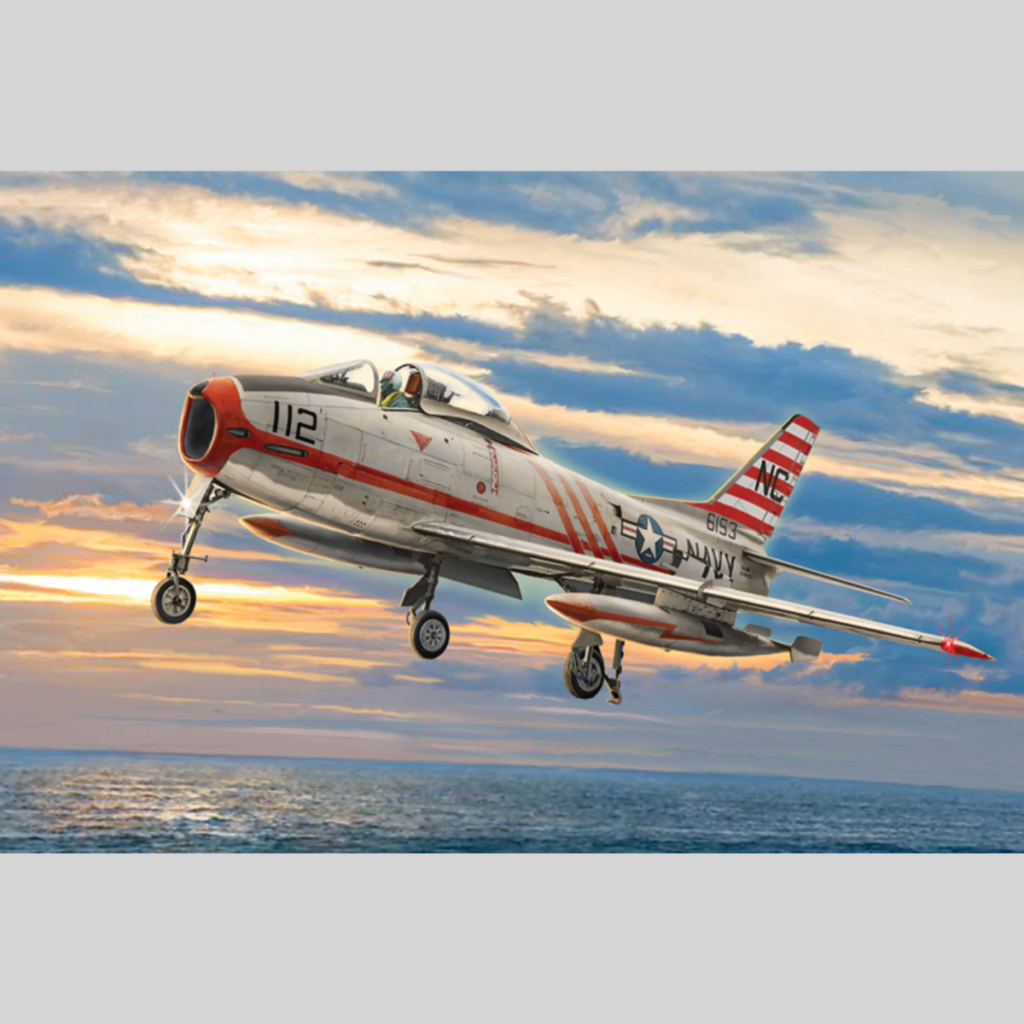
The Rise of a New Contender
The Soviet MiG-15 once dominated the skies over Korea, unmatched in combat prowess until the F-86 Saber arrived. This aircraft, with its superior handling, revolutionized aerial combat by initiating the first massive jet dogfights in history. However, its inability to operate from carriers left the Navy seeking a solution. The FJ-2 Fury emerged as the answer, designed to extend the Saber’s dominance to naval operations.
North American Aviation won a pivotal competition to produce the Navy’s inaugural operational jet, leading to the creation of the FJ-1 Fury. This aircraft, inspired by the P-51 Mustang, incorporated a straight wing design and an enhanced cockpit for better pilot visibility. Its successful carrier landing aboard the USS Boxer in 1948 set new standards, despite underscoring the need for advanced takeoff and landing technologies.

Advancements in Aerodynamics
The Fury’s design evolved with technological advancements, particularly the transition to swept-wing designs influenced by German research. The FJ-2 Fury, drawing inspiration from the F-86 Saber, represented a leap in aerodynamic design aimed at mastering both aerial and naval theatres. Key enhancements included folding wings and a modified nose strut to meet the unique requirements of carrier operations.
The FJ-2 encountered several obstacles during its development, particularly during initial carrier trials that exposed issues in low-speed handling and the durability of key landing components. The Navy responded with critical design modifications, such as an expanded landing gear and improved cockpit visibility. Despite these efforts, challenges with the steam catapult system demanded additional refinements.
The Marine Corps’ Involvement
As the Korean War intensified the need for Sabers, the FJ-2’s production faced delays, prompting a shift in preference towards the F9F Cougar for naval operations. Consequently, the Marine Corps inherited the FJ-2s, although efforts to address its operational deficiencies continued. Ultimately, the aircraft struggled to secure a role in frontline service and was phased out.
Undaunted by the FJ-2’s shortcomings, the Navy continued to innovate with the FJ-3 Fury, powered by the Armstrong Siddeley Sapphire turbojet. This iteration introduced significant aerodynamic enhancements, including an extended wing leading edge to improve maneuverability. The FJ-3 outperformed its predecessor and became a preferred choice over many F-86 variants, doubling the production figures of the FJ-2.
